Table of contents
Want to know how you could make your resume better?
Check out our list of resume tips to learn what you can do to grab the attention of recruiters, hiring managers, and applicant tracking systems (ATS).
Get valuable insight today to get your next job as soon as possible!
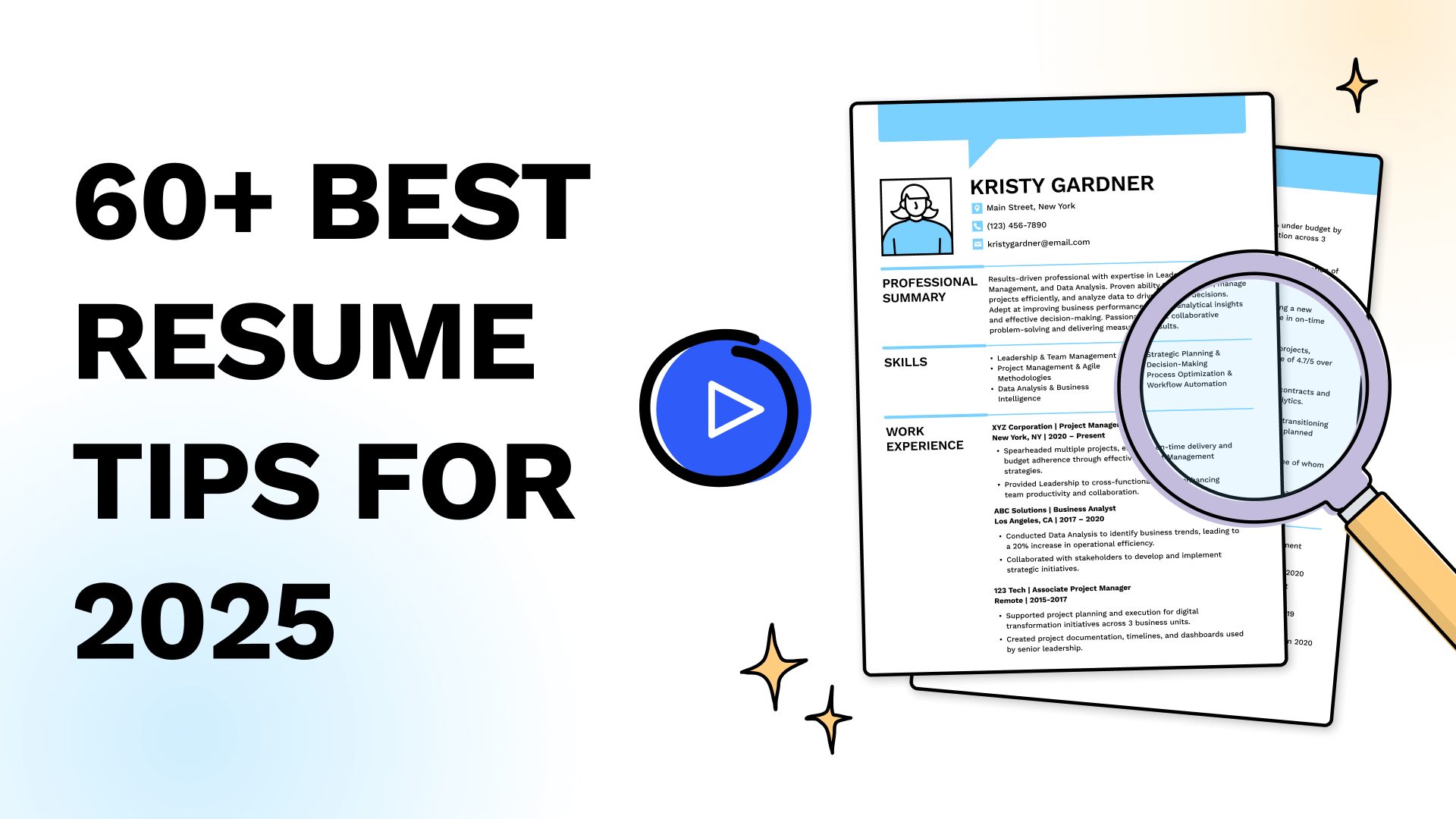
General Resume-Writing Tips
Tip #1
Limit your resume to 1-2 pages for most industries
You want to put your best face forward. Perhaps you’re tempted to list every skill and experience you’ve had. Don’t do it.
Instead, be concise. Most hiring managers spend only a few seconds on an initial resume scan, which isn’t much time to catch their attention.
For most industries, a one- to two-page resume length is ideal. By keeping it short, you prioritize the most relevant information and present a clean, easy-to-read document.
Bonus Tip
The exception would be CVs. If you work in certain professional fields like higher education, write a CV, which can be longer than two pages, as they attempt to encapsulate an entire career.
Tip #2
Customize your resume for each job application
No two jobs are exactly alike, even if they share a title. That’s why you should tailor your resume for each position you apply for.
The specifics of the job are important. Read the job description carefully to see what’s required and tweak your resume accordingly. Doing so will show the employer that you’ve researched the role and are aligned with their values.
Tip #3
Include keywords from the job description to bypass applicant tracking systems (ATS)
Many companies use applicant tracking systems to filter out resumes before they even reach a human reviewer.
These systems scan for keywords from the job description to weed out unqualified applicants. If you include the keywords in your resume, you’ll have a better shot at moving forward.
Tip #4
Keep tone and tense consistent
Use the present tense on your resume as much as you can to give it an immediate and active feel. This is particularly useful for ongoing duties and roles.
Also, aim for a consistent tone, be it formal or slightly casual, which will vary based on your industry.
Tip #5
Quantify your achievements wherever possible
Numbers speak louder than words when it comes to showing impact.
Instead of saying you “increased sales,” wow potential employers with something more specific like “boosted sales by 20% in Q1.”
Tip #6
Don’t use passive voice
Instead of writing “A marketing strategy was developed,” use “Developed a marketing strategy.” This phrasing emphasizes your actions and their direct impact.
Tip #7
Avoid clichés
Hiring managers are allergic to generic phrases like “hard-working” or “team player.”
Why? They’ve seen them a hundred times before.
While well-intentioned, you’d be better off focusing on showcasing specific examples of how you’ve demonstrated these qualities through your accomplishments.
Tip #8
Highlight your transferable skills
Transferable skills are the key to unlocking doors for traveling between industries.
Problem-solving, leadership and communication, for example, are valuable in nearly every industry. Highlight skills like these, emphasizing how they can benefit the position you’re targeting, even if it’s in a different role than you’ve previously held.
Resume Formatting Tips
Tip #9
Choose a readable font
In some ways, presentation matters as much as content. After all, if the hiring manager can’t read your resume, what’s the point? A poorly chosen font could be an instant turn-off.
To be safe yet stylish, give one of these classic sans-serif fonts a try:
- Arial
- Helvetica
- Verdana
Avoid fonts that are difficult to decipher or polarizing, like:
- Comic Sans
- Papyrus
- Brush Script
If you’d like more advice on fonts, we’ve written an entire guide on the best fonts for your resume.
Tip #10
Mind your margins
This one is simple: Your margins should be between 0.5 to 1 inch.
Margins frame your resume and give it structure. Proper margin size offers a balance between maximizing space and making sure your resume doesn’t appear cramped.
Tip #11
Use a resume builder
Formatting is a hassle — and outsourcing this work will save you a lot of time.
Millions of job seekers have used AI resume builders to do exactly that. The benefits of a builder include:
- Professional designs.
- Built-in, customizable formatting.
- Personalized content suggestions.
- Download in major file formats.
While most builders charge a few bucks to enroll, there are free options — something to consider if you find yourself flummoxed by formatting.
Tip #12
Use bullet points to improve readability
Long paragraphs are a major resume no-no.
Better to use bullet points to break up the copy. When hiring managers are short on time, bullet points will guide the reader’s eye and ensure key details aren’t missed.
Tip #13
Prioritize the most important information
First impressions count. Again, when time is scarce, and your resume is one of hundreds, hiring managers might only give your resume a fleeting glance.
You’ll be in the strongest position if you put your most important points near the top — like a professional summary tailored for the job.
Tip #14
Avoid clutter
Utilize white space to make your resume look clean and professional.
A cluttered resume can overwhelm a reader, making it difficult to discern key information. White space acts as a visual breather, separating sections and making your resume appear organized (even when you might not feel that way).
Tip #15
Use bold or italics sparingly
Bold and italics are wonderful — when they’re used thoughtfully.
Use them occasionally to emphasize certain details you want the hiring manager to notice. For example, bold your section headings, job titles or previous company names. Consider italicizing sub-headings like the “Technical Skills” portion of your “Skills” section.
Here’s an example from a skills section:
Bonus Tip
Consistency is key. If you bold one job title, you must bold them all. If you italicize one of the sub-headings in your “Skills” section, you should italicize them all.
Tip #16
Use color sparingly
A hint of color can make your resume stand out but don’t overdo it.
Too much color can be distracting or come off as unprofessional. A subtle touch — perhaps for headings or your name — can be effective.
Here’s an example of a resume that uses color very well:
Tip #17
Use a resume template as a starting point
When you’re worried about formatting, resume templates offer a shortcut.
Templates give you a predefined structure that adheres to industry standards. They’ll keep your information clean, organized, and professional. All you need to do is fill in the details.
They come in various styles—from modern and creative to plain and simple—and format types. Microsoft Word and Google Docs are the most popular types.
Tip #18
Consider a creative template in artistic fields
While simple and modern templates are perfect for many industries, artistic fields often call for something more distinctive.
If your profession is in art, photography, design or similar creative areas. In these fields, your resume can serve as a mini-portfolio, showcasing your artistic flair and design skills.
Resume Summary & Objective Tips
Tip #19
Start with a resume profile
Grab attention right away with a resume profile.
This short, powerful summary at the top of your resume showcases your best skills and experiences, making a strong first impression and setting the tone for the rest of your resume.
Tip #20
Clearly lay out your career goal
There are two types of resume profiles — objective statements and professional summaries.
A resume objective is perfect for sharing a vision for your career.
Objectives will touch on skills and top experiences, like a professional summary, but they emphasize purpose and direction more. Ambiguity can be misinterpreted as a lack of focus, so always be direct and state your aim.
Here’s what a good career objective would look like:
- Recent pharmacy graduate with a deep understanding of pharmaceutical principles, drug interactions and modern dispensing techniques.
- Eager to apply my knowledge and passion for patient care to a Clinical Pharmacist position at ABC Health.
- Committed to leveraging my skills to ensure accurate medication administration, optimize patient outcomes and contribute to a collaborative healthcare team.
Tip #21
Align your objective or summary with the job
While your resume should reflect your career, it should also be customized for the target role.
You can do that by reading the job description — a trusted way of matching an employer’s expectations — or reviewing the company mission. Either one will show that you’ve done some research.
Tip #22
Show your value with metrics
Demonstrate how you’d contribute to a company’s growth and success by citing your previous impact. This means going beyond your qualifications and previous responsibilities.
You can highlight this impact with specific accomplishments and numbers in your professional summary. Here’s an example:
- Dynamic and results-driven project manager with a proven track record of successfully overseeing 50+ cross-functional projects from inception to completion within the past five years.
- Recognized for consistently delivering projects 15% under budget and ahead of schedule, leading to an estimated cost saving of $2 million.
- Successfully managed and mentored a diverse team of 20+ professionals, achieving a 95% retention rate.
- Awarded ‘Employee of the Year’ in 2022 for outstanding performance and dedication to excellence.
Tip #23
Limit your summary or objective to 3-5 sentences
I can’t say it enough — on your resume, brevity is key.
Aim to limit your summary or objective to three to five succinct sentences that capture your professional peaks. Think of it as your elevator pitch — it should be compelling and concise, leaving the reader eager to learn more about you.
Tip #24
Changing industries? Consider a summary of qualifications
If your career path is taking a new direction, especially into a different industry, your work history alone might not tell the whole story.
A summary of qualifications lets you spotlight skills and experiences that are transferable and relevant, even if they’re from earlier roles or volunteer work. This section can help you make a compelling case for your candidacy by focusing on your most applicable abilities and accomplishments.
Example summary of qualifications for a marketing role:
- Proven track record in project management, successfully leading cross-functional teams in a nonprofit setting.
- Strong communication skills honed through five years of experience in public relations and community outreach.
- Advanced proficiency in social media analytics and content creation, consistently boosting online engagement by over 50%.
- Creative problem-solver with expertise in brand development and market research.
Contact Info Tips
Tip #25
Stick to essentials
Less really is more when it comes to contact info.
Your contact section should only cover the basics, like:
- Your name
- Phone number
- LinkedIn profile
- City and state (or country)
Anything beyond that can clutter your resume and detract from its professionalism.
Bonus Tip
If you work in a creative field, you should also include a link to your professional portfolio. Sometimes, showing your work is more effective than explaining it.
Tip #26
Omit most personal details
While you might be tempted to share personal tidbits to stand out, it’s best to leave them off your resume.
Information such as marital status, age or religious affiliation doesn’t pertain to your professional abilities and might introduce biases, inadvertently or otherwise.
Tip #27
Use a professional email address
Your email address can often be a first impression, so make it count.
Addresses like beerlover420@example.com or shorty4life@example.com won’t do. Whether they’re based on inside jokes or personal hobbies, ditch playful or outdated email addresses for something straightforward like your first and last name.
Tip #28
Include a location
Although remote work has become more popular, location still plays a role in your resume. After all, some remote roles require you to live in a specific state or country or have the ability to commute to the office on occasion.
You don’t need to add your entire address; just the city and state (or country) will suffice.
Resume Work Experience Tips
Tip #29
Go with a chronological resume to highlight work history
Structure matters.
When choosing a resume format, I usually recommend a chronological resume. This format focuses on work history, starting with your most recent job and working backward.
Anyone with even a little bit of work history would do well with this format.
There are two other alternatives to consider as well:
- The functional resume format focuses almost exclusively on skills, which makes it well-suited when you’re fresh out of school or changing industries and have few relevant work experiences.
- The combination resume format balances skills and experiences, making it well-suited for anyone who wants to highlight a particular skill set.
Again, if you want to zero in on work experience, the chronological resume is your friend.
Tip #30
Spotlight relevant roles
Not all experiences are equal. Depending on the job you’re targeting, you may want to highlight specific accomplishments more closely aligned with that job’s requirements. That’s the best way to show you’ve flourished in a similar context.
Tip #31
Use action verbs for emphasis
Give your resume the momentum it needs by starting each bullet point with a powerful action verb. Words like “orchestrated,” “transformed,” or “spearheaded” not only capture attention but also vividly illustrate your contributions in past roles.
Check out our mega-list of action words for inspiration.
Tip #32
Spice up your descriptions
Repetition can quickly make your resume seem monotonous. Ensure you mix up your verbs and descriptions to reflect the breadth of your experiences and skills. This variety will better showcase the full range of your skill set.
Bonus Tip
Avoid jargon. While industry-specific terms can show expertise, overloading your resume with jargon can make it inaccessible to recruiters or HR personnel who might not be as familiar with specific terminology.
Tip #33
Include achievements
While duties and responsibilities describe your previous roles, achievements put your impact in the spotlight.
Bullet points should highlight examples of times you exceeded targets, introduced beneficial changes or earned promotions. Quantify these accomplishments with numbers and percentages whenever possible.
Tip #34
Align it with your LinkedIn profile
Double-check that your resume and LinkedIn profile mirror each other in terms of roles, dates and descriptions. This alignment helps with credibility and reinforces your professional narrative when potential employers decide to do a quick online check.
Tips on Including Education
Tip #35
New grads should lead with education
If you’re a recent graduate with limited experience, your education section can play a bigger role.
While experienced professionals might lean on their work history, recent graduates should champion their educational background. Don’t be shy! Position your education at the forefront of your resume.
Tip #36
List your degrees in reverse-chronological order
If your education section is a highlight reel, you want to put your latest and greatest hits up top.
When listing your degrees, start with your most recent degree and work backward. Over time, once you’ve climbed the academic ladder with an advanced degree, feel free to drop your high school diploma.
Here’s what that might look like for someone who holds a Ph.D. in Psychology:
Ph.D. in Psychology
University of California, Los Angeles
September 2018 – June 2022
Dissertation: “Cognitive Behavioral Therapy: Innovations in Practice”
Master of Science in Psychology
Michigan State University
September 2015 – May 2017
Bachelor of Arts in Psychology
University of Texas at Austin
September 2011 – May 2015
Honors: Cum Laude
Tip #37
Mention relevant coursework
The education section of your resume isn’t only about college degrees.
You can use this area to touch on coursework … as long as it’s relevant.
For example, if you’re applying for an SEO role, mentioning that you took a course in digital marketing fundamentals is definitely a plus.
Bonus Tip
When you’re still working toward completing a degree or certification, you’ll need to communicate this to potential employers. Listing your education as “In Progress” or “Expected [Month, Year of Completion]” should do the trick.
Tip #38
Mention current learning
Your skills should always be evolving.
Are you enrolled in a course? Pursuing a new certification? Highlighting ongoing learning shows your dedication to personal growth and your proactive attitude toward your career.
Tip #39
Include your GPA — only if it’s impressive and recent
Proud of your GPA? Hey, it’s worth mentioning!
But proceed with caution. If your GPA is a shining beacon of academic excellence and is recent, by all means, include it. But if it’s been several years since you graduated or if the number isn’t particularly stellar, leave it off and let your other accomplishments take center stage.
Tips for Additional Resume Sections
Tip #40
Showcase relevant skills
Throughout your resume, and especially in your skills section, you should highlight a mix of skills throughout your resume, especially in your skills section.
They can be soft skills like communication and problem-solving or hard skills like data analysis and project management. Don’t neglect the subsets of hard skills, such as computer skills, which cover software programs and tools like Excel and Photoshop, and technical skills, like operating heavy machinery.
All of these should be accounted for on your resume.
Here are a handful of skill sets to consider adding to your resume:
Tip #41
Flaunt your certifications
Certifications are the badges of expertise you’ve collected throughout your professional journey. If you have certifications, give them a distinct section on your resume. They’re a great way to show engagement in your career.
Tip #42
Touch on conferences and publications
This is particularly crucial for academics or those in research-intensive fields.
If you have experience speaking at conferences or have published articles related to your field, adding a publications or conferences section to your resume is what you need. This is the perfect showcase for expertise and contributions to your field.
Research your target industry to determine how to present this information best. For publications, include the title, publication date and co-authors. For conferences, list the event name, date and the topic of your presentation.
Tip #43
Declare language proficiencies
In a global world, language is important. Language bridges and fosters understanding and collaboration among diverse populations.
Better yet — adding a language to your resume instantly opens up a whole bunch of new job opportunities.
Bonus Tip
Be transparent about your level of mastery. Being clear with potential employers will avoid awkward conversations in the future, whether it’s basic, conversational or fluent.
Tip #44
(Relevant) volunteer work matters
Never underestimate the power of volunteer work.
Not only do employers see volunteering as a reflection of your character and values, they’re also a way many people learn new skills. They’re valuable experiences to tap into throughout your career.
If you have space left on your resume and the volunteer work is particularly relevant to the job, make a section dedicated to volunteering.
Tip #45
Mention noteworthy projects
Many professionals and students work on projects outside their regular jobs — these are worthwhile additions to your resume if they meaningfully relate to your career.
Bonus Tip
Another section to add to your resume — honors and awards. Be specific by mentioning the award’s name, the organization that granted it, and the date received. If the name is not self-explanatory, include a bullet about its significance.
Tip #46
Include internships or training
Many job seekers have an internship, training or apprenticeship under their belt.
In some cases, you may want to break the internships into their own section, but in most cases, they can take a seat in your work history. After five to 10 years pass and you’re deep into your career, you should let your internships fall off.
Tip #47
Tread carefully with hobbies
While hobbies can add a personal touch to your resume, choose them wisely.
If a hobby directly aligns with the job or showcases transferable skills (like leadership in team sports), it’s worth including. You don’t need to tell the employer about your model train set … unless you’re a conductor.
Tip #48
Highlight conferences and workshops
Conferences, seminars and workshops are more than just learning opportunities.
They’re also platforms where professionals network, share and get updated with the latest in their field, which makes them a reasonable addition to your resume.
Of course, if you presented at the conference, that’s even better.
Tip #49
“References Available Upon Request” is out
As modern resume practices evolved, the phrase “References Available Upon Request” became redundant. Most employers assume you’ll provide references if asked.
Save that precious space on your resume for more compelling content that showcases your qualifications and achievements.
Bonus Tip
Although mentioning your references on your resume is considered obsolete, you should nonetheless have a professional references list ready to go should anyone ask for it.
Resume Building Tips
Tip #50
Use a resume builder
Choose a resume builder that offers ATS-friendly templates, customization options and industry-specific content. Look for builders with positive user reviews and a variety of export formats.
Tip #51
Utilize built-in suggestions
Resume builders often provide pre-written phrases and bullet points tailored to your industry and job title. These suggestions can be easily added to your resume with a single click, saving time and guaranteeing professional language.
Tip #52
Personalize the results
While builders provide excellent starting points, it’s crucial to edit and personalize the suggested content. Add your unique experiences, achievements and metrics to make your resume stand out and accurately reflect your career.
Tip #53
Play around with the formatting
Resume builders offer a safe environment to experiment with layout and design. You can try different fonts, colors and section arrangements without risk, as the builder keeps your content within professional boundaries.
Tip #54
Export the correct file format
Most builders allow you to export your resume in various formats like PDF, DOCX or TXT. Choose PDF for preserving layout across devices, DOCX for easy editing or TXT for plain text applications. Always check the job posting for preferred formats.
How to Finalize Your Resume
Tip #55
Proofread, proofread, proofread
A spelling mistake or grammatical error can cost you the job.
It might sound silly, but an employer might see even a small typo as a sign of carelessness.
Always triple-check your resume, ensuring every detail is accurate and professionally presented.
Tip #56
Get a second pair of eyes on your resume
While you might think your resume is flawless after multiple revisions, a fresh perspective will catch errors that even those with an eagle eye would appreciate. Always ask a trusted friend, family member or colleague to review it and provide feedback.
Bonus Tip
Consider using a platform like Grammarly to help you catch errors.
Tip #57
Print your resume out
Sometimes, issues are more evident on paper than on screen. Holding a physical copy of your resume can offer a different view.
Sometimes, formatting issues or subtle mistakes become more apparent on paper than when viewed digitally. Also, read it aloud to catch awkward phrasings or redundancy.
Tip #58
Stick to PDF (unless specified otherwise)
To ensure your resume’s formatting remains consistent across different platforms and devices, always save and send it as a PDF unless the employer requests a different format.
PDFs will retain the formatting as intended, guaranteeing the hiring manager sees the best version of your resume.
Tip #59
Keep your resume fresh
Don’t wait for job opportunities to update your resume.
As you acquire new skills, attend training or achieve new accomplishments, add them right away. If you’re proactive, you’ll always be prepared.
Tip #60
Consider mobile readability
Today, some hiring professionals might be reviewing resumes on their mobile devices. Optimize your resume’s design and layout to ensure it’s mobile-friendly, guaranteeing a smooth reading experience regardless of the device.
This is another reason to use a resume builder — the mobile formatting is handled for you. Check out our resume examples to see what I mean.
Tip #61
Make a matching cover letter
A well-crafted cover letter can set you apart from other candidates and allow you to share a story or two about your career achievements.
If you decide to write a cover letter, ensure the design matches your resume.
You can use our Cover Letter Generator to make matching documents or make one on your own easily with our formatting guide.
More Tips for Resume Writing
Tip #62
Showcase the right skills to stand out
Employers in 2025 are prioritizing candidates with a strong mix of hard and soft skills. Make sure your resume reflects the qualifications that employers are looking for.
Include technical skills like proficiency with tools, software, or industry-specific technologies, alongside interpersonal abilities like leadership, communication, and adaptability.
Tailor this section by mirroring the exact skills listed in the job description to demonstrate you’re the perfect match.
Tip #63
Highlight AI and tech expertise
With AI and technology transforming nearly every industry, showcasing your proficiency in these areas can make your resume stand out.
Include examples like experience with AI-powered tools, knowledge of machine learning processes, or using platforms like ChatGPT for content creation or customer support.
Even if your role isn’t directly tech-focused, demonstrating comfort with emerging technologies shows you’re forward-thinking and adaptable.
Bonus Tip
Even if you’re not a tech expert, mention transferable tech skills like “automation of repetitive tasks” or “optimizing workflows with AI tools.” Employers value candidates who embrace technology in any capacity.
Tip #64
Format your resume to pass ATS filters
Most employers now use applicant tracking systems (ATS) to filter resumes before they even reach human eyes. To avoid being eliminated by the system, use a simple, ATS-friendly format.
Stick to a clean design with standard fonts, clear section headers, and no fancy graphics or tables. Avoid overly creative designs or elements that might confuse ATS software.
Bonus Tip
Use our free ATS Resume Checker to find out your resume’s ATS score and follow our suggestions to optimize it as much as possible.
Tip #65
Build your personal brand
Your resume is more than a list of qualifications — it’s a tool to showcase your unique value.
Build a personal brand by highlighting what sets you apart, such as your key strengths, core values, and professional mission.
Ensure this branding is consistent across your resume, cover letter, and even your LinkedIn profile to present a cohesive image to employers.
Tip #66
Highlight your adaptability and commitment to growth
In today’s fast-changing work environment, employers value adaptability and a willingness to learn.
Demonstrate this on your resume by mentioning professional development courses, certifications, or examples of stepping into new roles or industries. This shows you’re ready to take on challenges and thrive in evolving workplaces.
FAQ
The most important elements are your contact information, work experience, skills, and education. Tailor each section to the job description, focusing on achievements and keywords that align with the role.
Use action verbs and quantify your achievements with metrics to show measurable impact. A professional design and customization for each job application can also help you stand out.
Stick to a clean, ATS-friendly format with standard fonts, clear section headers, and no graphics or tables. Incorporate relevant keywords from the job description to optimize for ATS software.
Yes, a professional summary or objective helps introduce your qualifications and sets the tone for the rest of your resume. Keep it concise and aligned with the job you’re applying for.
You should update your resume whenever you gain new skills, certifications, or work experience. Regular updates ensure it’s ready for new opportunities and reflects your most current accomplishments.
Was this information about 60+ Best Resume Tips For 2025 helpful? Let us know!
Don is a Certified Professional Resume Writer (CPRW) with more than 10 years’ experience creating digital content, including four years helping job seekers develop their careers. He holds an M.S. in Journalism from Northwestern University.
More resources

How to List Language Skill Levels on Your Resume
Language skills give you an instant advantage in the job marke...
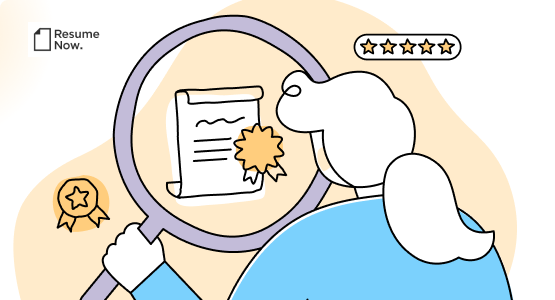
These Certifications Align With the 11 Most In-Demand Skills of 2030 and Can Boost Pay
Resume Now report reveals the high-value skills and certificat...

How to Write a One Page Resume: Guide & Examples for 2025
Use one of our expertly crafted one-page resume examples as a ...
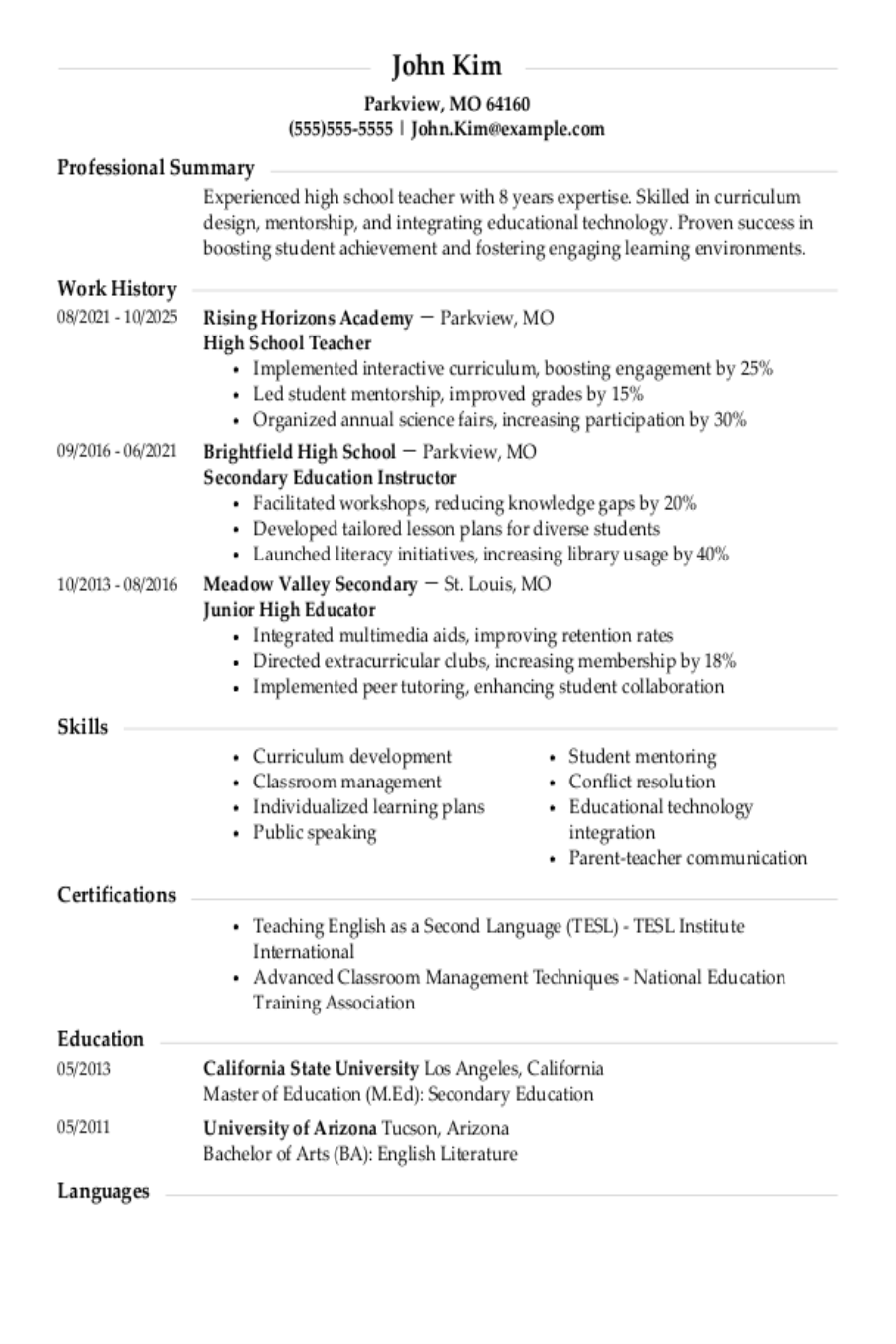
High School Teacher Resume for 2025: Examples and Guide
Get inspired with our high school teacher professional resume ...
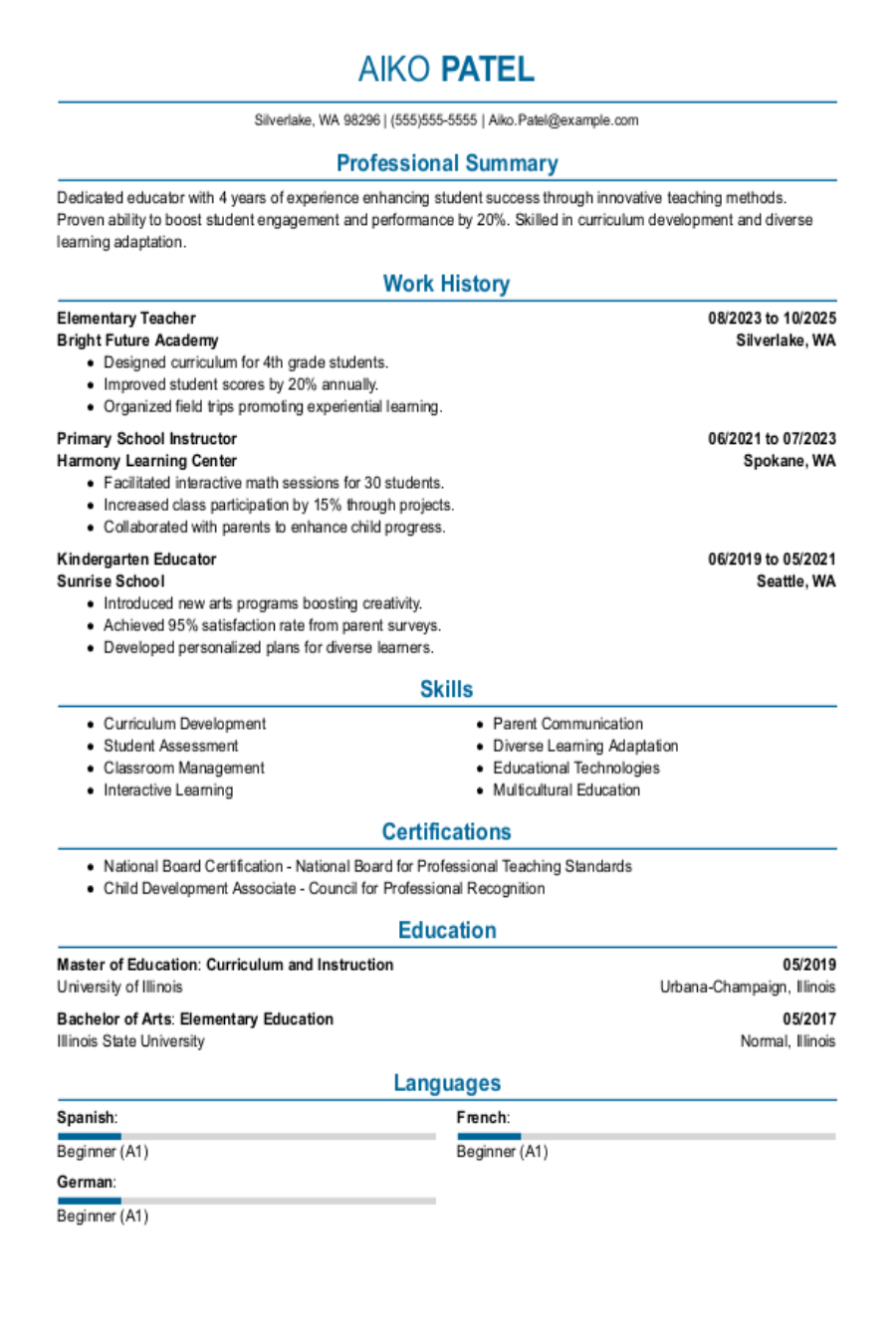
Elementary Teacher Resume: Examples, Templates & Tips for 2025
Build & download your Elementary Teacher resume in a few simpl...
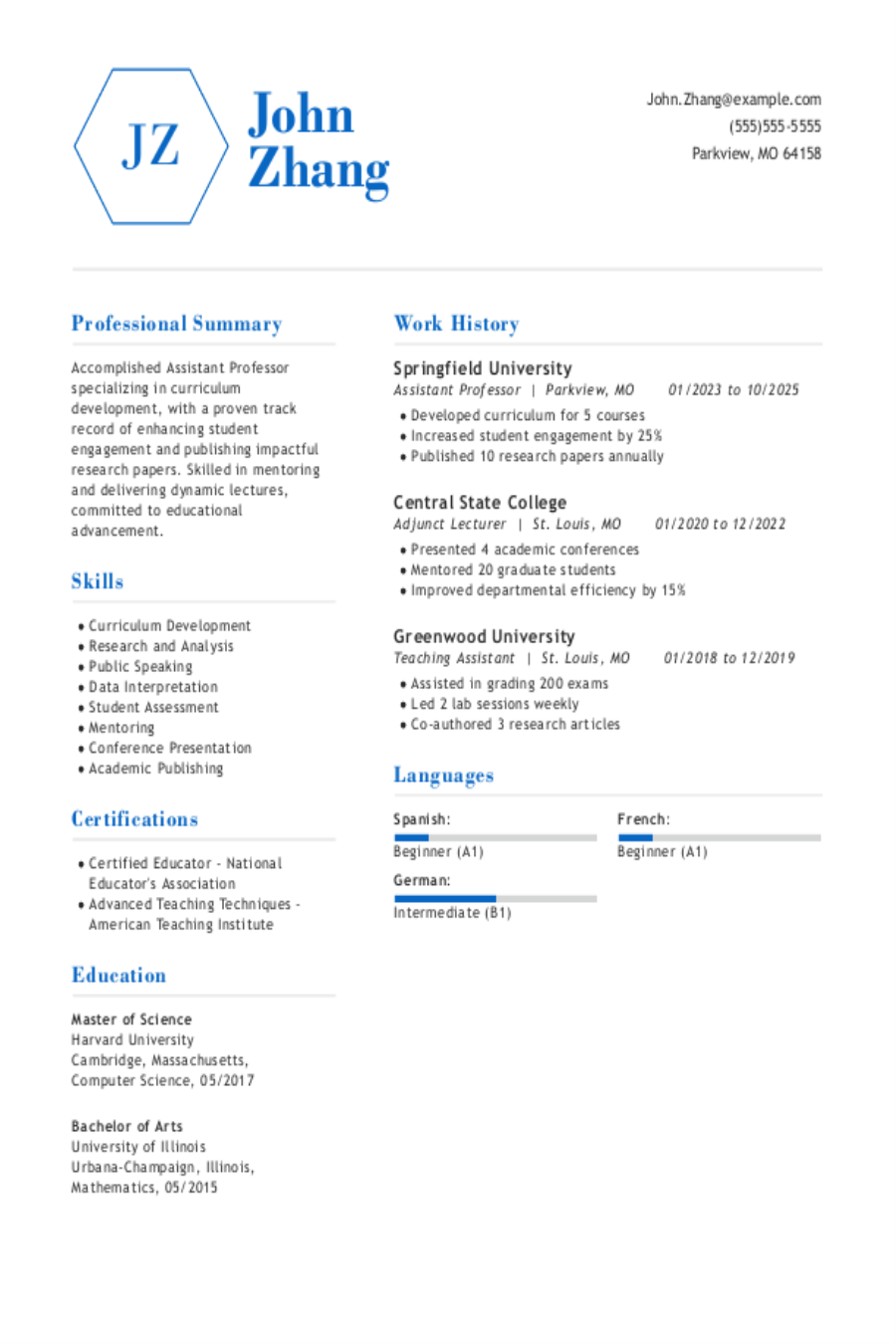
Assistant Professor Resume: Examples, Templates & Tips for 2025
Looking for a job as an assistant professor? Check out our tai...
